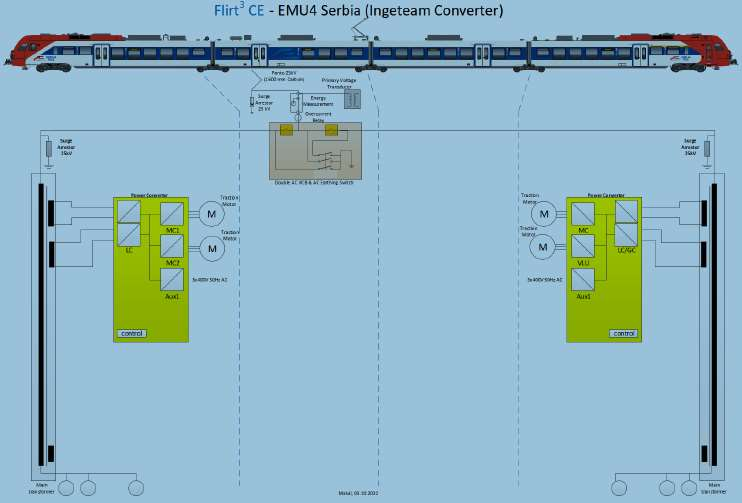Thermal and viscous irreversibilities in the heat exchanger of individually finned heat pipes using freon R404A as the working fluid
Abstract
This work aims to apply a theoretical procedure to determine the performance of the heat exchanger of individually finned heat pipes used in an air conditioning system. The relevant physical quantities are defined and specified locally in the evaporator and condenser sections. The results obtained in the sections are associated with the theoretical determination of the global performance of the heat exchanger. Global theoretical results are compared with global experimental results. Thermal effectiveness, heat transfer rate, pressure drop, thermal and viscous irreversibilities, and thermodynamic Bejan number are determined at the evaporator, condenser, and heat exchanger. The relevant variables used to determine the results are the number of fins per heat pipe and rows of heat pipes. The theoretical-experimental comparison demonstrates that the localized model applied in the analysis is consistent and can be used as a design and comprehensive analysis tool for finessed heat exchangers. The performance of the heat exchanger demonstrated exceptionalness when comparing irreversibilities through the Bejan number, indicating a favorable cost-benefit ratio for the fins less than 30 and the number of heat pipes equal to 49. Bejan’s thermodynamic number, which uses results related to thermal and viscous irreversibilities, demonstrated that one should look for the relationship between thermal irreversibility versus total irreversibility and that fin numbers between 10 and 20 for heat pipes equal to 49 provide a better cost-benefit ratio. The absolute percentage errors obtained between theoretical and experimental values, for an experimental number of fins equal to 30, for the overall heat transfer rate and overall thermal effectiveness range from 2.0% to 42.1%.
References
[1]Górecki G, Łęcki M, Gutkowski AN, et al. Experimental and numerical study of heat pipe heat exchanger with individually finned heat pipes. Energies 2021; 14(17): 5317. doi: 10.3390/en14175317
[2]Nogueira E. Localized theoretical analysis of thermal performance of individually finned heat pipe heat exchanger for air conditioning with freon r404a as working fluid. Materials Science and Chemical Engineering 2023; 11(8): 61–85. doi: 10.4236/msce.2023.118005
[3]Fakheri A. Heat Exchanger Efficiency. Heat Transfer 2007; 129(9): 1268–1276. doi: 10.1115/1.2739620
[4]Nogueira E. Thermo-hydraulic optimization of shell and externally finned tubes heat exchanger by the thermal efficiency method and second law of thermodynamics. International Journal of Chemical and Process Engineering Research 2022; 9(1): 21–41. doi: 10.18488/65.v9i1.3130
[5]Nogueira É. Thermal performance in heat exchangers by the irreversibility, effectiveness, and efficiency concepts using nanofluids. Journal of Engineering Sciences 2020; 7(2): F1–F7. doi: 10.21272/jes.2020.7(2).f1
[6]Putra NSD, Anggoro T, Winarta A. Experimental study of heat pipe heat exchanger in hospital hvac system for energy conservation. International Journal of Advance Science Engineering Information Technology 2017; 7(3): 871–877. doi: 10.18517/ijaseit.7.3.2135
[7]Höhne T. CFD simulation of a heat pipe using the homogeneous model. International Journal of Thermofluids 2022; 15: 100163. doi: 10.1016/j.ijft.2022.100163
[8]Jouhara H, Almahmoud S, Brough D, et al. Experimental and theoretical investigation of the performance of an air to water multi-pass heat pipe-based heat exchanger. Energy 2021; 219: 119624. doi: 10.1016/j.energy.2020.119624
[9]Barrak A. Heat pipes heat exchanger for HVAC applications. In: Vega MA (editor). Heat Transfer—Design, Experimentation, and Applications. IntechOpen; 2021.
[10]Jouhara H, Chauhan A, Nannou T, et al. Heat pipe-based systems—Advances and applications. Energy 2017; 128: 729–754. doi: 10.1016/j.energy.2017.04.028
[11]Abd El-Baky MA, Mohamed MM. Heat pipes heat exchanger for heat recovery in air conditioning. Applied Thermal Engineering 2007; 27(4): 795–801. doi: 10.1016/j.applthermaleng.2006.10.020
[12]Sukarno R, Putra N, Hakim II, et al. Multi-stage heat-pipe heat exchanger for improving energy efficiency of the HVAC system in a hospital operating room. International Journal of Low-Carbon Technologies 2021; 16(2): 259–267. doi: 10.1093/ijlct/ctaa048
[13]Abedalh AS, Yasin NJ, Ameen HA. Thermal performance of HAVC system using heat pipe heat exchanger. Journal of Mechanical Engineering Research and Developments 2021; 44(2): 336–344.
[14]Amini A, Miller J, Jouhara H. An investigation into the use of the heat pipe technology in thermal energy storage heat exchangers. Energy 2017; 136: 163–172. doi: 10.1016/j.energy.2016.02.089
[15]Hakim II, Sukarno R, Putra N. Utilization of u-shaped finned heat pipe heat exchanger in energy-efficient HVAC systems. Thermal Science and Engineering Progress 2021; 25: 100984. doi: 10.1016/j.tsep.2021.100984
[16]Rohsenow WM. A method of correlating heat transfer data for surface boiling of liquids. Transactions of the American Society of Mechanical Engineers 1952; 74(6): 969–975. doi: 10.1115/1.4015984
Copyright (c) 2023 Élcio Nogueira

This work is licensed under a Creative Commons Attribution 4.0 International License.





.png)


